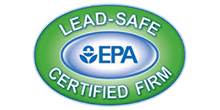When a person thinks of real estate investing, they probably imagine a billionaire who manages multiple commercial properties or a person who invests in fixer-uppers and turns them into a beautiful house — but this is not exactly it. In fact, anyone can become a real estate investor, and you don’t need huge amounts of capital to get started.
Real estate investing has multiple benefits: from monthly cash flow to appreciation, tax benefits, and direct control of your investments. But the main benefit is how versatile it can be. It can be passive, when you just sit back and collect income without a lot of micromanaging; or active, when you are personally managing the property.
With real estate investing, you can truly decide how much time, energy, and effort you want to put into it. So, between active and passive investment, which is right for you?
Main Differences Between Active and Passive
Put simple, the main difference between an active and a passive investment has to do with the amount of ongoing work involved to maintain the investment, among other aspects:
Control
In a passive investment, the investor is a limited partner in the deal. The capital is given to an experienced sponsor who will take care of acquiring and managing the property. The investor has no direct control over any part of the business plan – it’s all in the sponsor’s hands. An active investor has direct control over the business plan. The investor can make decisions about the renovations, the tenants, the rental rate to charge, when to refinance or sell, and more.
Time
As active investors have more control over the business plan, they also have a greater time commitment. They have to take care of tasks such as closing on a deal and form a good property management team. Passive investing is more hassle-free. The investor vets the apartment syndicator and the deal and from then, invests the capital and reads the project updates.
Risks
Passive investors are exposed to less risks, since they do contribute money and expect a return, but are not actively involved in the day to day operations and are protected against any liability. An active investor has significantly more risk, since they or their company is the official owner of the property, and they are liable. However, both types of investors have some level of risk, as with any investment.
How Can I Choose What Type is for Me?
It all depends on how much time and knowledge you have. If you already have a primary job and the investment would be a secondary income, passive investment is for you. But if you can get fully involved in the investment and want to have full control of the business plan, then active investment might be your best choice.
If you want to learn more about passive and active investment and want to get started, get in touch with Rivers Partners. We’ll be more than happy to answer any inquiries and questions.



